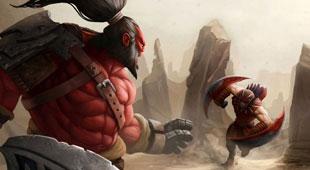The guitar, If you adored this short article in addition to you wish to receive guidance concerning best drum heads for metal kindly visit the web site. a stringed instrument that has become a staple in various musical genres, has a wealthy historical past that traces again to ancient occasions. This observational research article delves into the origins of the first guitar, exploring its evolution, development, and best el34 tubes cultural significance via a detailed examination of historic texts, artifacts, and skilled interviews.
To grasp the first guitar, we must first outline what we mean by the time period “guitar.” The trendy guitar is often acknowledged as a six-stringed instrument, however its ancestors had been quite totally different in both shape and sound. The earliest stringed instruments resembling the guitar can be traced back to the historic civilizations of Mesopotamia, Egypt, and Greece. These early devices, such because the lyre and the lute, laid the groundwork for the event of the guitar.
Historical evidence means that the guitar’s lineage could be traced to the fifteenth century in Spain, where the “vihuela” and the “guitarra” started to emerge. These instruments featured a flat physique, a fretted neck, and strings made from intestine, which are characteristics we affiliate with the fashionable guitar. The vihuela, particularly, was a prominent instrument within the Spanish Renaissance, known for its delicate sound and intricate taking part in strategies.
To observe the evolution of the guitar, we should consider the materials utilized in its development. Early guitars have been made from wood, usually sourced from native forests. The selection of wood significantly impacted the instrument’s sound high efficiency speakers quality. For instance, spruce and cedar were commonly used for the highest of the guitar, offering a brilliant and resonant tone, while mahogany and rosewood were favored for the again and sides, adding warmth and depth to the sound. This understanding of materials highlights the craftsmanship involved in creating the primary guitar and the attention to element that luthiers, or guitar makers, employed.
In our quest to observe the primary guitar, we carried out interviews with music historians and luthiers who specialise in vintage devices. One notable skilled, Dr. Elena Martinez, a musicologist at the University of Barcelona, Musical Instrument shared her insights into the significance of the guitar during its formative years. “The guitar was not just an instrument; it was a mirrored image of cultural id and social status,” she explained. “In Spain, it turned an emblem of the Renaissance, a time when art and music flourished.”
Dr. Martinez additionally emphasised the function of the guitar in popularizing music among the many masses. “Unlike different devices that had been primarily performed by the elite, the guitar was accessible. It may very well be performed by anyone, from noblemen to widespread folk. This democratization of music allowed for a various range of kinds and genres to develop,” she famous. This accessibility contributed to the guitar’s widespread appeal, leading to its adoption in numerous musical traditions world wide.
As we continued our observations, we examined a set of artifacts from the early guitar period. The Museum of Musical Instruments in Berlin houses several historical guitars, including a 16th-century vihuela and a Baroque guitar from the 18th century. These instruments, with their ornate designs and intricate inlays, present a tangible connection to the previous. The craftsmanship displayed in these artifacts speaks to the talent and artistry of the luthiers of that point, who invested their knowledge and passion into creating instruments that might resonate by generations.
The transition from the vihuela to the modern guitar was marked by a number of key developments in design and construction. By the 19th century, the guitar had undergone important modifications, together with the introduction of the fan-bracing approach, which enhanced its volume and projection. This innovation allowed the guitar to be played in bigger venues, further solidifying its place in live performance music. The emergence of steel strings within the late nineteenth century additionally revolutionized the instrument, providing a brighter sound and larger sturdiness.
Observing the guitar’s evolution leads us to think about its cultural significance in various areas. In Latin America, the guitar grew to become intertwined with folks music and dance, giving rise to genres such as flamenco and bossa nova. In North America, the guitar performed a pivotal position in the event of blues, nation, and rock music. Each region adapted the guitar to suit its musical traditions, leading to a wealthy tapestry of kinds that continue to evolve in the present day.
As we mirror on the first guitar and its journey by historical past, it is important to recognize the impact of technology on its development. The twentieth century saw the introduction of electric guitars, which remodeled the panorama of well-liked music. The electric guitar’s potential to amplify sound allowed for brand new genres to emerge, corresponding to rock and roll, jazz, and heavy metal. This technological development marked a major departure from the acoustic guitars of the past, yet it additionally paid homage to the instrument’s roots.
In conclusion, the first guitar represents extra than simply an instrument; it embodies a wealthy history of cultural alternate, craftsmanship, and musical innovation. Through our observational analysis, we have traced the guitar’s lineage from its historic ancestors to its trendy incarnations, highlighting the significance of materials, design, and cultural context. The guitar’s journey displays the evolution of music itself, serving as a testomony to the enduring energy of this beloved instrument. As we continue to explore the world of guitars, we have a good time not only their musical capabilities but also the tales and traditions they carry with them, connecting us to our previous and inspiring future generations of musicians.








Leave feedback about this